Peonies rank among the top favorites when it comes to exquisite floral varieties, owing to their impressive, vibrant blossoms and an extensive palette of hues. These perennial plants are incredibly low-maintenance and possess the ability to flourish in diverse environments, rendering them a superb choice for enhancing any garden. Regardless of whether you boast a seasoned green thumb or are a novice enthusiast, this comprehensive compendium on Paeonia and peonies will furnish you with the complete knowledge required for successfully cultivating, nurturing, and relishing these stunning blooms.
In this segment of the guide, we present an overview of Paeonia, encompassing its distinctive features and fundamental information. Moreover, we present valuable guidance on planting and tending to Paeonia and peonies, encompassing the selection of an ideal location, soil fertilization techniques, and proper watering practices. Lastly, we delve into the art of pruning and propagating these exquisite blossoms to ensure their utmost vitality and maximize their blooming capacity.
Paeonia: An Introduction to the Enchanting Peony
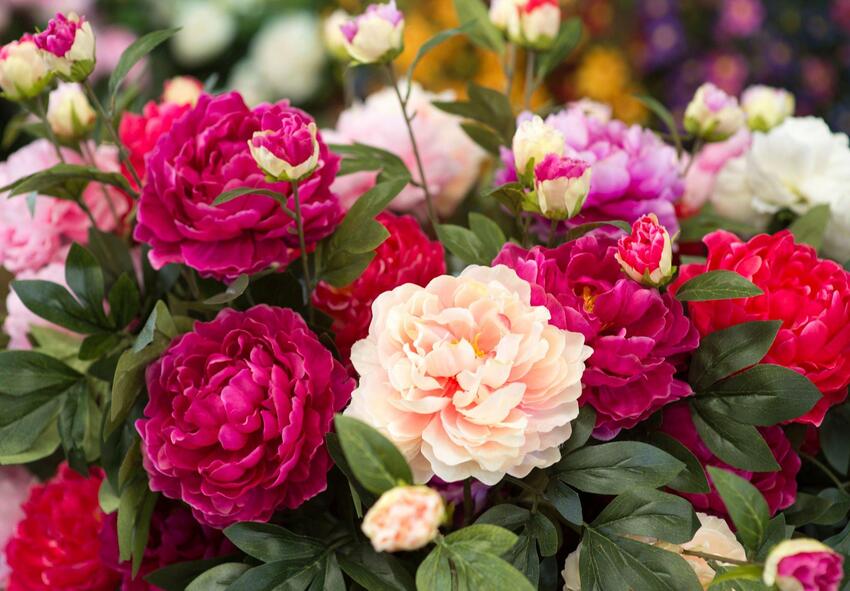
For centuries, the peony, scientifically referred to as Paeonia, has captivated individuals worldwide as a beloved flowering plant. Renowned for its breathtaking blossoms boasting a diverse spectrum of hues, this plant has garnered immense admiration. Peonies exhibit a varied range of sizes, from diminutive plants to towering shrubs that can extend up to 7 feet in height. Being perennials, they regrow each year and are known for their effortless maintenance.
Basic Data and Characteristics of Paeonia
Peonies exhibit a remarkable array of colors, encompassing captivating shades of pink, white, red, and yellow. Moreover, these enchanting flowers offer a diverse selection of sizes, ranging from petite varieties standing at around 3 feet in height to majestic types that can reach a towering stature of 7 feet. Peonies demonstrate a resilient nature and can thrive in zones 3-8, showcasing their adaptability to a wide range of climatic conditions. Typically, they grace us with their splendid blooms during the late spring or early summer, adding an exquisite touch to the natural landscape.
Table of Paeonia Varieties and Basic Data
Here is a table of some of the most popular Paeonia varieties and their basic data:
| Variety | Botanical Name | Usage | Origin | Heyday | Flower Colors | Particularities |
| Sarah Bernhardt | Paeonia lactiflora ‘Sarah Bernhardt’ | Cut Flower, Garden | France | Late Spring | Pink | Fragrant |
| Karl Rosenfield | Paeonia lactiflora ‘Karl Rosenfield’ | Cut Flower, Garden | Germany | Late Spring | Red | Fragrant |
| Coral Charm | Paeonia lactiflora ‘Coral Charm’ | Cut Flower, Garden | USA | Late Spring | Coral | Changes color as it matures |
| Bowl of Beauty | Paeonia lactiflora ‘Bowl of Beauty’ | Cut Flower, Garden | Japan | Mid-Spring | Pink and White | Fragrant |
| Festiva Maxima | Paeonia lactiflora ‘Festiva Maxima’ | Cut Flower, Garden | France | Late Spring | White with Red Flecks | Fragrant |
Peonies – Care, Planting, Pruning
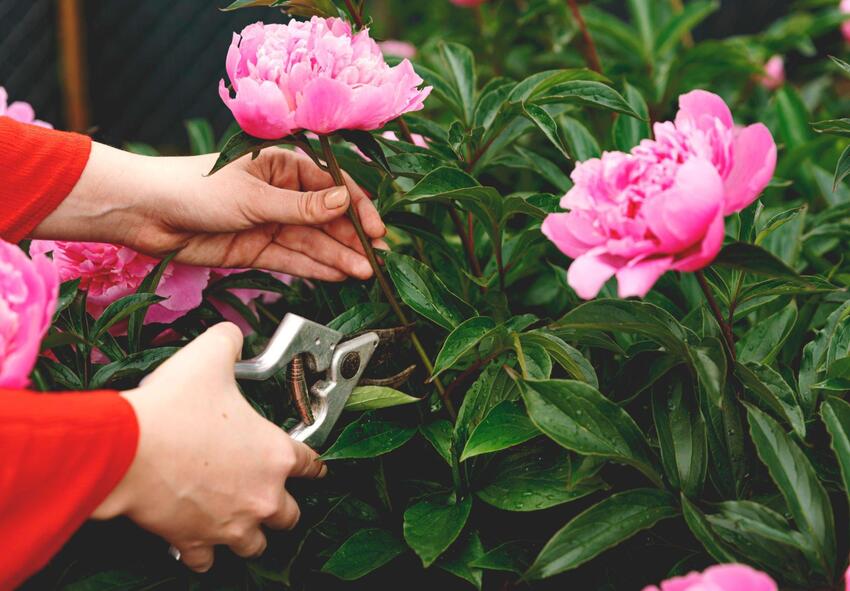
Within this segment of the guide, you will find a comprehensive compilation of essential insights regarding the nurturing, planting, and trimming of peonies. It encompasses a detailed introduction to the various peony varieties, invaluable recommendations for prosperous cultivation, step-by-step instructions for planting, and crucial methodologies for ensuring the vitality of your plants. Furthermore, it encompasses expert guidance on the art of pruning and propagating these exquisite flowers, unlocking their full potential for growth and blooming.
Peonies: Exploring the Different Types and Their Unique Qualities
Peonies come in two main types: herbaceous and tree peonies. Herbaceous peonies are the most common and are known for their large, colorful blooms. They die back to the ground in the winter and re-emerge in the spring. Tree peonies are woody shrubs that bloom earlier than herbaceous peonies and have smaller, but equally beautiful, flowers. They keep their leaves throughout the winter and are more like a small tree.
Features of Peony Care: Tips for Successful Cultivation
When embarking on the planting journey of peonies, selecting an appropriate location holds paramount importance. These vibrant blooms thrive in full sun exposure, but it is equally crucial to allocate ample space for their growth. It is advisable to plant them at a distance from other plants to prevent any potential sensitivity to competition. During the planting process, ensure the excavation of a spacious hole and enrich the soil with generous quantities of compost and fertilizer. Regular watering, particularly in the scorching summer months, is essential to sustain the well-being of peonies.
Planting Paeonia and Peonies
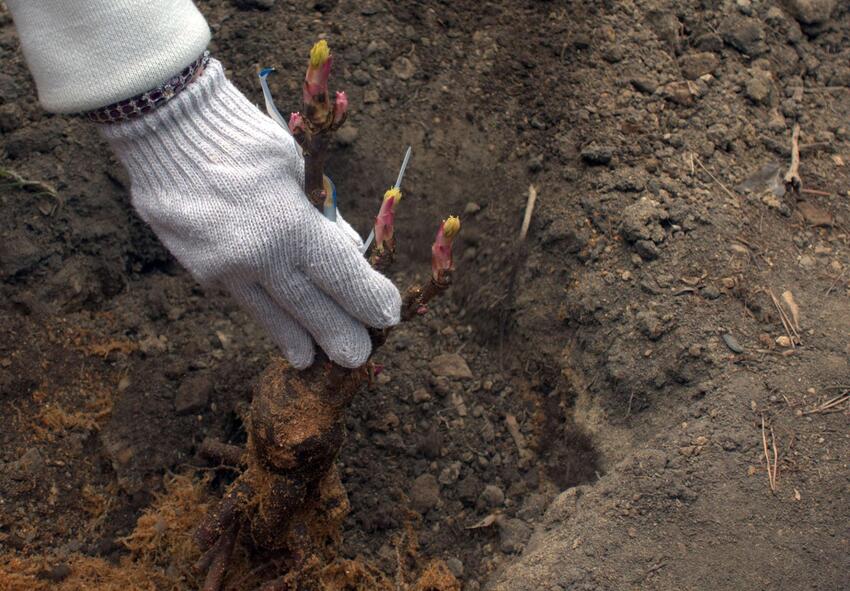
When undertaking the planting of Paeonia and Peonies, utmost consideration must be given to the quality of soil and the chosen location. These plants flourish in well-drained soil that boasts a high content of organic matter. Additionally, they require either full sun exposure or partial shade to achieve their optimal growth potential. During the planting process, it is crucial to excavate a broad hole and incorporate an ample amount of compost and fertilizer into the soil. Ensuring that the top of the root ball aligns evenly with the soil surface is also essential for successful planting.
How to Plant Paeonia: Steps for Establishing Beautiful Blooms
Planting Paeonia can be a manageable task with proper care. The initial crucial step involves selecting an appropriate location. Paeonia thrives in full sun exposure, but it can also tolerate partial shade. Ensuring the soil is well-drained is essential, and you can enhance its quality by incorporating compost or other organic matter. When planting the peony, dig a hole that is twice as wide as the root ball, and ensure the depth is such that the top of the root ball aligns evenly with the soil surface. Following these guidelines will contribute to a successful Paeonia planting experience.
Planting Peonies: Guidelines for a Thriving Peony Garden
To ensure successful peony planting, careful consideration of the location is crucial. Peonies thrive in full sun but also require ample space for unhindered growth. It’s advisable to select a planting spot that is away from other plants, as peonies can be sensitive to competing vegetation. During the planting process, dig a spacious hole and enrich the soil with an adequate amount of compost and fertilizer. When placing the peony in the ground, make sure the hole is twice as wide as the root ball, and the top of the root ball should be level with the soil surface. Following these guidelines will help foster healthy peony growth.
Care for Paeonia and Peonies
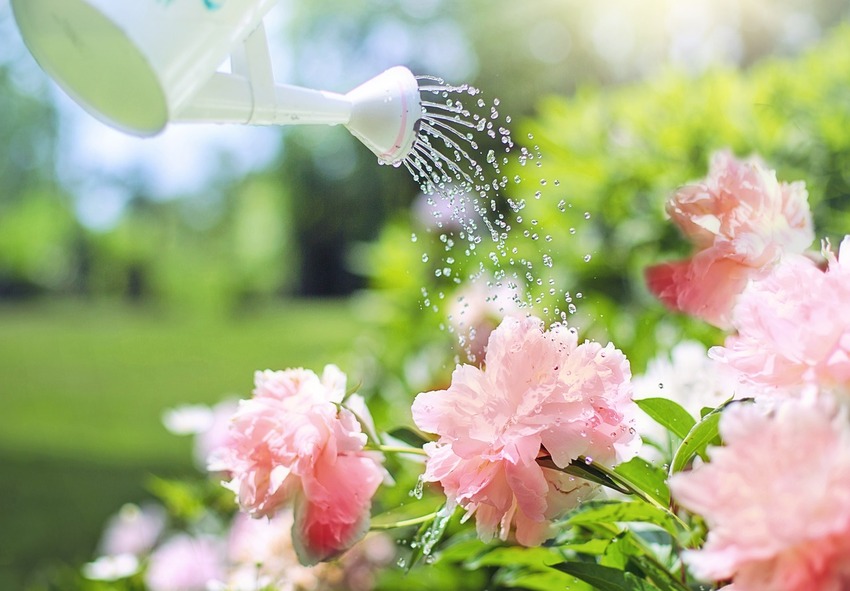
This section covers essential care techniques for maintaining healthy Paeonia and peony plants. This includes regular watering, annual fertilization, and careful pruning after flowering. Deadheading spent blooms can also help promote more blooms later in the season.
Paeonia Care: Essential Techniques for Maintaining Healthy Plants
Paeonia is a relatively low-maintenance plant, but it still needs some care. Make sure to water it regularly, especially during the hot summer months. Fertilize the plant once a year, and make sure to prune it after it has finished flowering. Deadheading spent blooms can also help promote more blooms later in the season.
Caring for Peonies: Nurturing Gorgeous Blooms and Foliage
Peonies require little maintenance, but they do need some care. Water the plant regularly, especially during the hot summer months. Fertilize the plant once a year, and make sure to prune it after it has finished flowering. Deadheading spent blooms can also help promote more blooms later in the season.
Pruning Paeonia and Peonies
Pruning is essential for maintaining the health and beauty of Paeonia and peony plants. After the plants have finished flowering, it’s important to remove any dead or damaged growth to promote healthy growth and keep the plant looking its best. With proper pruning techniques, these beautiful flowers can continue to thrive year after year.
Pruning Paeonia: Tips for Shaping and Enhancing Plant Growth
Practicing proper pruning techniques for Paeonia is a task that demands attention. After the plant concludes its blooming phase, delicately trim the stems, ensuring to eliminate any deceased or impaired growth. This meticulous approach encourages robust development and ensures the plant maintains its optimal appearance.
Pruning Peonies: Maximizing Blooming Potential and Plant Health
For trimming peonies, it’s as easy as trimming the stems once the plant is done blooming. Ensure you eliminate any lifeless or impaired growth to prevent the onset of ailments and pests. This practice will foster robust development and maintain the plant’s appealing appearance.
Propagating Paeonia and Peonies
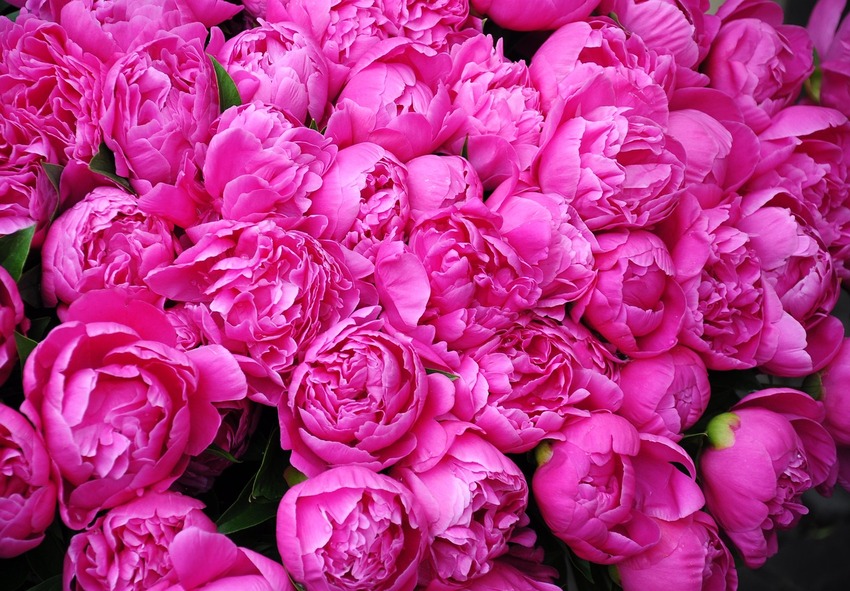
Propagating Paeonia and Peonies is relatively simple and can be done through the process of division. To divide the plant, simply dig it up and separate the roots before replanting in a new location. It is important to ensure that each division has at least 3-5 “eyes” or buds to ensure optimal growth.
Propagating Paeonia: Methods for Expanding Your Peony Collection
The most straightforward method for reproducing Paeonia is through plant division. This can be accomplished during the autumn or early spring seasons. Just excavate the plant, separate the roots, and reposition them in a different area.
Propagating Peonies: Simple Steps to Multiply Your Blooms
For the propagation of peonies, a straightforward approach involves dividing the plant either during the autumn or early spring. Excavate the plant, carefully separate the roots, and proceed to relocate them to a different area. It is important to ensure that each division consists of a minimum of 3-5 “eyes” or buds.
Overwintering Paeonia and Peonies
Properly preparing peonies and Paeonia for the winter is crucial for maintaining their well-being and vigor. To safeguard these plants during the colder months, it is vital to generously apply a thick layer of straw or leaves as mulch. This protective measure effectively insulates the roots and shields them from freezing temperatures. Furthermore, it is advisable to trim the plants once they have completed their flowering phase, as this encourages robust growth and enhances their potential for blooming in the upcoming season.
Overwintering Paeonia: Protecting Your Plants from Cold Winter Conditions
To safeguard Paeonia during winter, it is essential to apply a generous layer of mulch consisting of straw or leaves. This protective measure acts as insulation for the roots, shielding them from the cold temperatures.
Overwintering Peonies: Preparing Delicate Blossoms for Frost
For winter protection of peonies, it is important to apply a substantial layer of mulch using straw or leaves. This practice serves as insulation for the roots, safeguarding them from the cold weather.
Bloom Time of Paeonia and Peonies
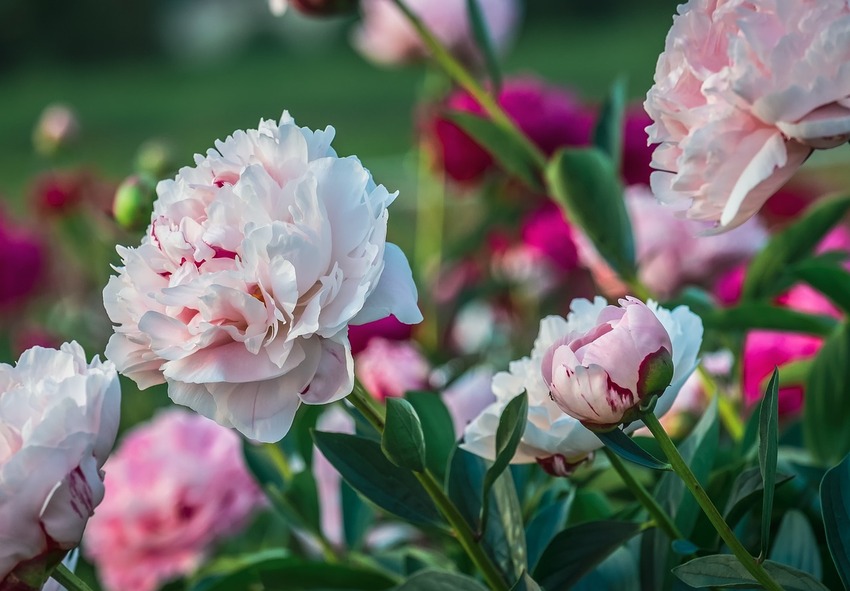
Paeonia and peonies generally exhibit their vibrant blooms in the late spring or early summer, gracing us with their exquisite flowers for a duration of approximately two weeks. To maintain a continuous display of blossoms, it is advisable to select peony varieties that bloom at varying times throughout the season. This strategic choice will allow for an extended and delightful flowering experience.
When Do Paeonia Plants Bloom? A Guide to Their Beautiful Flowering
Paeonia plants usually burst into bloom during the late spring or early summer, offering a stunning display of their captivating and flamboyant flowers. These remarkable blossoms can persist for approximately two weeks, gracing their surroundings with beauty and charm.
Peony Bloom Time: Enjoying the Ephemeral Beauty of Peony Petals
Peonies generally reveal their magnificent, eye-catching flowers during the onset of late spring or early summer. It is during this time that you can anticipate witnessing the captivating beauty of these blooms. The resplendent flowers tend to remain in their full glory for a span of approximately two weeks.
Essential Considerations for Paeonia and Peonies
Essential considerations for Paeonia and peonies include choosing the right soil, selecting hardy varieties for your climate, and planting them away from other plants that may compete for nutrients.
What May Be Needed? Tools and Supplies for Successful Paeonia Cultivation
For the prosperous cultivation of Paeonia, a handful of indispensable tools and supplies are required. These encompass a shovel, compost, fertilizer, pruning shears, and mulch.
Selecting the Right Soil for Paeonia and Peonies: Factors to Consider
When picking soil for Paeonia and Peonies, it’s important to opt for a soil that has good drainage and is abundant in organic material. Moreover, it’s crucial to plant them in a spot that gets ample sunlight or partial shade.
Frequently Asked Questions (FAQs) about Peonies
1. What are Paeonias, and how do I care for them?
Paeonias, commonly known as peonies, are exquisite flowering plants cherished for their captivating blooms. To care for peonies, plant them in well-draining soil in a sunny spot, ensuring they receive at least 6 hours of sunlight daily. Water moderately, keeping the soil consistently moist but not waterlogged. Prune spent blooms to encourage new growth, and provide support for taller varieties. Peonies are relatively low-maintenance and can thrive for decades with proper care.
2. When is the best time to plant dutch peonies?
The ideal time to plant peonies is in the fall, typically from late September to early November. Planting in the fall allows the roots to establish before the winter frost sets in, promoting healthy growth and abundant blooms in the spring.
3. Can I order peonies from your online store?
Yes, you can! Our online store offers a wide selection of peonies plants, including different varieties and colors. We take pride in providing top-quality plants that are carefully cultivated and shipped with care to ensure they reach you in perfect condition. Visit our online store to explore our collection and place your order for a delightful addition to your home or garden.
4. What are some common pests and diseases that affect peonies?
Peonies are generally resilient, but they can be susceptible to issues like powdery mildew, botrytis blight, and nematodes. To prevent these problems, ensure good air circulation around the plants, avoid overhead watering, and remove and dispose of any infected plant material promptly. Regularly inspect your peonies for signs of pests like aphids or spider mites and treat them with appropriate insecticidal soap or neem oil if necessary.
5. Can I grow peonies in containers or pots?
While peonies are typically grown in the ground, they can also thrive in large containers or pots. Choose a container with good drainage and fill it with a well-draining potting mix. Be mindful of watering and ensure the container receives adequate sunlight. Keep in mind that peonies in containers may need extra protection from harsh winter weather, as the roots are more exposed to cold temperatures.
Published: 15.06.2023
